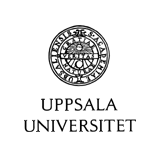Uppsala University
![]() Department of Information Technology
Department of Information Technology
Technical Report 2001-024
A hybrid method for the wave equation
Larisa Beilina, Klas Samuelsson, and Krister Åhlander
October 2001
Abstract:Hybrid finite element/finite difference simulation of the wave equation is studied. The simulation method is hybrid in the sense that different numerical methods, finite elements and finite differences, are used in different subdomains. The purpose is to combine the flexibility of finite elements with the efficiency of finite differences.
The construction of proper geometry discretisations is important for the hybrid approach. A decomposition of the computational domain is described, which yields simple communication between structured and unstructured subdomains.
An explicit hybrid method for the wave equation is constructed where the explicit finite difference schemes and finite element schemes coincide for structured subdomains. These schemes are used in the hybrid approach, keeping finite differences on the structured subdomains and applying finite elements on the unstructured domains. As a consequence of the discretisation strategy, the resulting hybrid scheme can be regarded as a pure finite element scheme. Any numerical difficulties such as instabilities at the interfaces are thus avoided.
The feasibility of the hybrid approach is illustrated by numerous wave equation simulations in two and three space dimensions. In particular, the approach can easily be used for implementing absorbing boundary conditions.
The efficiency of different approaches is a key issue of the current study. For our test cases, the hybrid approach is about 5 times faster than a corresponding highly optimised finite element method. It is concluded that the hybrid approach may be an important tool to reduce the execution time and memory requirement for this kind of large scale computations.
Note: Also available as Preprint 2001-14 in Chalmers Finite Element Center Preprint series
Available as compressed Postscript (3.4 MB, no cover)
Download BibTeX entry.
